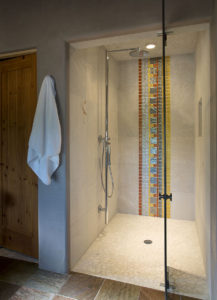A New Title for the New Year

As this year opens, we introduce a new column title, and we promise a renewed and active contemplation of the ways in which interior spaces impact our lives. We’ll seek to uncover and evaluate the influences in our choices in how we live our personal and collective stories in the everyday, and of course particularly in interior design.
Live Your Story will be a shared journey through the hectic and oftentimes contradictory world of consumer culture, design, and decision-making. Our goal? To find those elements that strike a chord more resonating than trendy and more interesting than popular. It’ll be an adventure, and we’re glad to have you along!
For most of us, January is traditionally a time for beginnings, for anticipating how the circle will turn and how our hopes and plans will unfold. Doggedly, we attempt to chart a course through numbered and categorized lists and notepads of good intentions, ranging from the little and banal to the elaborate and extraordinary. Articulating our desired results is the easy part. But how does one get there? The work we do has shown that if our lives and our surroundings are approached with a process that is iterative, reflective, and even collaborative (with the right partners), the success and gratification in living true to oneself inherently emerges.
In essence, we help guide that process of designing a life, one that captures your own story, and yours alone. One of the most powerful results of good interior design is that it allows your own story to live not only in your head and in your relationships, but in your day-to-day. It makes your story real in the world, and reinforces it, strengthening your own commitment to living it authentically.
So how does one set about designing a life and telling a story, you ask? If sitting in front of a blank canvas, what might you paint that would represent that life? One definition of "to design" is to prepare the form and structure of; to plan and fashion artistically or skillfully. When interior designers approach a design challenge, the most important questions aren’t about paint color or textile choices. They are: What is the problem to solve? And what is the desired outcome?
To get to those answers, a sort of framework that lays out the essentials is critical — including your values, your preferences, what appeals to your senses, and how you want to present yourself. This framework and the ideals it represents then becomes a litmus test against which all future decisions about the design are judged. The more we honor those essentials, the more discerning we are able to be, and the better we get at filtering out all the extraneous stuff culture and the marketplace demand we pay attention to. We get to avoid the game of "squirrel" that derails so much good design theory, resulting in poor execution. Of course, this same sort of thinking can be applied to almost every single aspect of our lives.
We know that after a lifetime of experience, change is hard. Both little changes and big changes complicate our lives, but also allow us to grow and embrace our dreams. Often a component of change is a willingness to go against the grain, to find a new path. Good design can help. As both a catalyst and a foundation supporting change, good design asks what’s important about where you are in your personal story, where you want to end up, and how you can get there in a way that is uniquely yours.
A well-designed life depends on knowing yourself, being honest with yourself, and embracing the challenge of change as a way to something better and more true to your ever evolving story.


